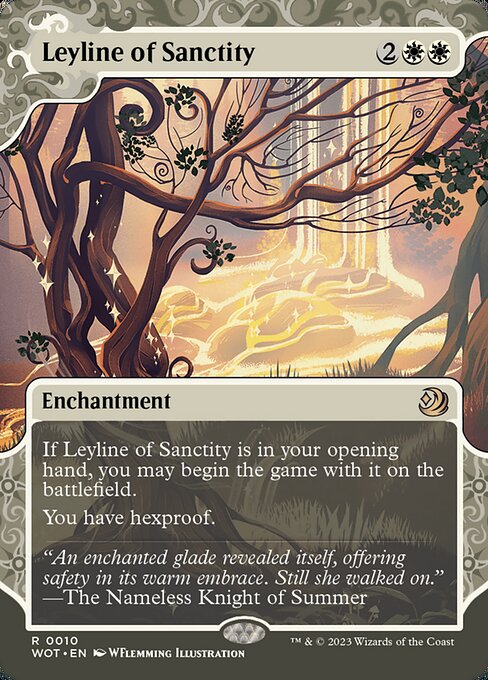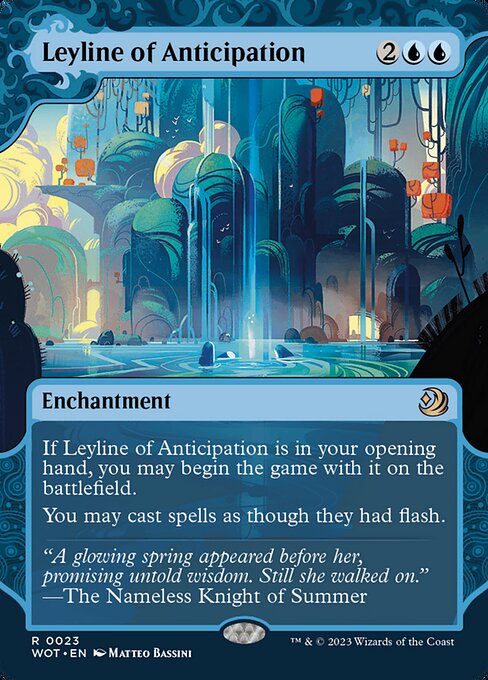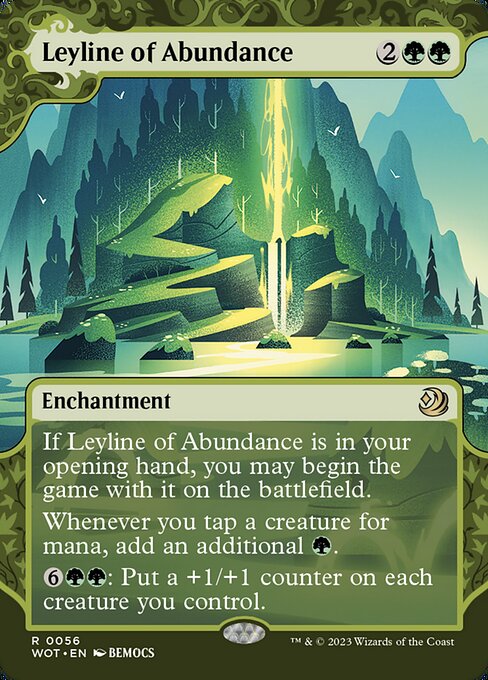Table of Contents
Hey everyone! I don’t know about all of you, but I’ve been having an absolute blast playing the Ravnica Mixer event! It feels like a completely new format, which is a treat considering that Midnight Hunt draft has more or less been solved. Slinging some of my favorite cards from back in the day also brings back a bunch of great memories of the various formats!
Event Details
Draft one pack each of Core Set 2019, Core Set 2020, and Core Set 2021.
- Duration: November 5, 2021 at 8:00 AM PT – November 12, 2021 at 8:00 AM PT
- Format: Ravnica Mixer (one each pack of Core Set 2019, Core Set 2020, and Core Set 2021) Draft
- Entry Fee: 1,500 Gems or 10,000 Gold
- Ends After: 7 wins or 3 losses (whichever comes first)
- Match Structure: Single matches (BO1)
- Player Draft – A timed draft with 7 other players
Event Rewards
- 0 Wins: 50 gems and 1 Core Set 2019 Pack
- 1 Win: 100 gems and 1 Core Set 2019 Pack
- 2 Wins: 250 gems and 2 Core Set 2019 Packs
- 3 Wins: 1,000 gems and 2 Core Set 2019 Packs
- 4 Wins: 1,400 gems and 3 Core Set 2019 Packs
- 5 Wins: 1,600 gems and 4 Core Set 2019 Packs
- 6 Wins: 1,800 gems and 5 Core Set 2019 Packs
- 7 Wins: 2,200 gems and 6 Core Set 2019 Packs
It’s awesome that the MTG Arena team plans to continue this trend since the Core Set Premier draft (which follows the same formula as the Ravnica Mixer) is coming out on November 5th. My first PTQ win was in Core Set 2019 limited, and I’ve extensively played all three formats in the past. I’ve always loved Core Set Limited, so I never had an issue with drafting it an insane amount. I’m going to do my absolute best to impart as much of my format knowledge as possible so you can go into these drafts and run the tables!
Most core sets have a similar limited formula where every color pair is a supported archetype. Understanding what each archetype is trying to accomplish and what are the key commons and uncommons will help you navigate each pack, understand which color pairs are best supported, and know how to go about combining very different archetypes that are in the same color pair. I’ll go over them in order of how I value them.
Core Set 2019

- Boros Aggro: Boros is far and away the best color pair in this set because of the abundance of cheap aggressive creatures in red and white. Pegasus Courser, Star-Crowned Stag, Goblin Motivator, Boggart Brute, and Cavalry Drillmaster all encourage attacking. Inspired Charge and Trumpet Blast synergize well with the go-wide plan of Boros and are key commons for the deck. Angel of Dawn fills a similar role and is one of the best commons. Heroic Reinforcements is the best non-rare in the set since it ends the game almost every time after it’s cast.
- Dimir Control: Classic Dimir control is almost always excellent. Good removal and insane finishers like Psychic Symbiont, Salvager of Secrets, and Meteor Golem give Dimir some of the best end game. Value Dwindle highly, especially in this archetype since most of your threats will have flying.
- Orzhov Lifegain: Skymarch Bloodletter, Lich’s Caress, Vampire Neonate, and Herald of Faith all combine to consistently gain life and allow for you to abuse payoffs like Regal Bloodlord and Epicure of Blood. Vampire Sovereign is tied for best non-rare in the set and is obviously especially fantastic here. Keep in mind that Vampire Neonate is surprisingly good and can end the game very quickly once board stalls are reached. It’s also a consistent way to trigger all your lifegain payoffs.
- Rakdos Sacrifice: Same old song and dance here. Value Act of Treason highly and pair it with some powerful sacrifice outlets. You haven’t lived until you steal a creature, hit the opponent with it, and then used Thud to finish them off!
- Izzet Spells: Again, nothing too special here. Enigma Drake, Guttersnipe, Aven Wind Mage, and Salvager of Secrets mean that the aggressive spells matter deck is solid and plays very similarly to how it plays in Midnight Hunt limited.
- Simic Big Creatures: Another classic archetype that relies on early ramp like Druid of the Cowl and Elvish Rejuvenator to power out huge creatures like Colossal Dreadmaw and Vigilant Baloth (Just look at those creepy eyes!). You can then follow up your great creatures with the solid blue disruptive spells and card a draw. Skyrider Patrol is one of the best gold cards in the entire set and is the most common reason for me to dive into Simic. Also, Dryad Greenseeker is unbelievably good so try to never pass it!
- Azorius Artifacts: I don’t love Azorius, but Skyscanner, Aviation Pioneer, and Explosive Apparatus get way better when you can pair them with Skilled Animator and Scholar of Stars. This isn’t like traditional Azorius archetypes; in M19, Azorius is looking to beat down. The bad removal is my biggest issue with this archetype, but what’s nice is that cards like Switcheroo get way better in this archetype since you’re more likely to have crummy creatures like Aviation Pioneer and Field Creeper lying around.
- Gruul Aggro: Gruul is fine, but red and green just don’t pair very well together in this set. This archetype has almost no answer to bigger creatures, which means that you basically lose if your opponent drops a big flier like Demanding Dragon or Resplendent Angel. Gruul is a worse aggressive color than Boros and doesn’t have much card advantage or good removal, which makes it easy for it to get out competed at nearly every point in the game.
- Golgari Midrange: Yet again, another mediocre Golgari archetype. Poison-Tip Archer is powerful, however Golgari has basically no synergies, which just means that the archetype relies solely on card quality. That’s a bad place to be because every drafter will be equally valuing all the powerful spells that you need to make Golgari a good deck. Big creatures and good removal in theory seems good, but in actuality performs way worse than you would think.
- Selesnya Enchantments: There was a good effort here with cards like Satyr Enchanter being in the set and being a great payoff, but throwing auras on your creatures is just destined to fail if you play against any sort of removal heavy deck. The payoffs in the archetype are not worth the risk, and a perfect example of this is Druid of Horns, which does nothing unless your opponent has no removal and you have a bunch of auras ready to go. I’d just steer clear of this, especially because you only get one pack of the enchantment synergies.
Color Rankings
- Black
- White
- Red
- Blue
- Green
Core Set 2020

First, let’s break down the archetypes that are more or less the same as 2019. Knowing this will know if it’s safe to solidify yourself into the color combination that you came into pack two with. Orzhov is lifegain based again with cards like Angel of Vitality and Dawning Angel being especially great in Orzhov. Orzhov also benefits from black being by far the best color in the entire set. Audacious Thief is disgusting and although it might not seem like it, is probably tied with Murder as the best common. It’s just so easy to pair removal with it and then run away with the game. Having Murder at common also means that you can’t go wrong with being black in pack two.
Dimir Control is more or less the same in M20 as it is in M19. However, there’s even more support for Dimir in M20 because Cloudkin Seer and the busted black commons make it really easy to have a ton of removal and creatures that give you efficient two-for-ones. Boros is a lot weaker in M20, but that doesn’t mean that you should have much issue with staying the course and continuing to take aggressive Boros creatures in this pack to fill out your curve. There’s still a bunch of goodies like Scampering Scorcher and Master Splicer that work phenomenally with Inspired Charge effects. Boros also has the added benefit of having access to Chandra, Novice Pyromancer which in my opinion is the best non-rare in the entire set.
Izzet is more tempo than spell based (with a slight elemental theme) in M20, but Cloudkin Seer, Chandra’s Outrage, and Lightning Stormkin will still fit perfectly in nearly any Izzet deck that you’re looking to play. As for Rakdos, M20 also has Act of Treason at common and a bunch of good sacrifice outlets, so you should be able to stay on course and have a great deck if you’re Rakdos after pack one. Keep in mind that even though Ogre Siegebreaker is the key Rakdos uncommon, it’s honestly just not a good card and is something that should still be played, but also valued pretty lowly. Sanitarium Skeleton on the other hand can be fantastic in the right deck, especially once you start combining a bunch of Bone Splinters with it. Unfortunately, Golgari is yet again one of the worst color combinations in M20 because as expected, the colors do not synergize well together. Moldervine Reclamation and Silverback Shaman are awesome cards, but neither pair well with the green elementals or any of the sacrifice synergies in black. I’d still avoid Golgari unless both green and black are incredibly open.
Simic in this set is still about ramping out big creatures and drawing cards, but it especially shines here because of the surplus of great elemental synergies. Risen Reef is an absolute bomb, and Leafkin Druid, Cloudkin Seer, Boreal Elemental, and Overgrowth Elemental are all very solid. The best thing about Simic though is it’s insane top end. Howling Giant is stupidly good, and Scholar of the Ages is incredibly easy to loop with a bounce spell once you have a bunch of mana. Gruul is also elemental based (which is pretty obvious since Creeping Trailblazer is the gold uncommon), except it takes a more aggressive approach and has both Chandra's Embercat and Leafkin Druid as fantastic early ramp creatures to power out your Vorstclaws and Thicket Crashers. Gruul and Simic also pair very well together, so do keep in mind that you can pivot into Temur elementals in this pack if you get a bunch of Risen Reefs, but you still would only be getting one pack of payoffs so do keep that in mind.
Here are the two color pairs that do a 180. Azorius is based around Flying in M20, so it’s going to be difficult to pull off whatever Azorius artifact nonsense that you were trying to do from the first pack. You could open Steel Overseer, but that’s pretty risky to bank on! Keep that in mind and try to prioritize standalone good blue and white cards if you are going to end up going Azorius. Personally I would avoid it unless it’s incredibly open. Black is just so good in these first two packs, and Mammoth Spider, Plummet, and the great aggressive rampers make it easy to handle fliers and get underneath them. There’s actually no enchantment synergies for Selesnya, so I’d also avoid this color combination unless you’re white after pack one and open Gargos, Vicious Watcher or something.
Color Rankings
- Black
- Blue
- Red
- Green
- White
Core Set 2021

Nearly the same archetypes as M20 are present in M21:
Orzhov: Lifegain
Azorius: Fliers
Rakdos: Sacrifice aggro
Simic: Ramp-card draw nonsense
Gruul: Aggro or ramp
Dimir: Control with a slight reanimator splash
Izzet: Spell Aggro
Golgari: Midrange-death-matters-garbage
Boros: Go-wide aggro
Selesnya: This is the one exception, where instead of enchantment or token synergies, Selesnya is about counter synergies.
At this point you should be solidified in two colors, which should make drafting relatively easy. Since it’s a core set, there’s way less synergies and you more or less should just bank on taking powerful cards that are in your colors. Knowing the archetypes and having a ranking of the colors will help you decide what colors you should be going into during packs one and two.
Color Rankings
- Black
- Red
- White
- Blue
- Green
Tips and Tricks
- Stick to two colors. There are dual lands at common in the first two packs, but it will be in your best interest to keep your deck streamlined and avoid splashing cards unless they are bombs. This isn’t like the Ravnica Mixer where certain packs don’t support the two colors you’re playing. There’s way more powerful mono-colored cards in this core set mix up, so it shouldn’t be hard to get enough playables.
- Transmogrifying Wand and Chaos Wand are surprisingly great. Chaos Wand needs to be built around to fully abuse it, but Transmogrifying Wand is going to be good in any non-aggressive deck since it can upgrade your own creatures while still being able to answer opposing bombs.
- The Elder Dragons from the first pack are insanely powerful, but I would refrain from picking them early on. The chances of you being able to play them is just way too low, so spend those early picks just taking good creatures and removal.
- Don’t try to get Gigantosaurus to work. Trust me, I’ve tried. Same goes for Phylactery Lich.
- Chandra, Awakened Inferno is the best card in all three sets. No matter what, play it if you’re lucky enough to open it.
- Every Leyline (even the green one) are unplayable.
- Silversmote Ghoul is unbelievably good and a key part of any black deck.
- Renowned Weaponsmith was fantastic in M20 limited, but since you only have one pack with Heart-Piercer Bow and Vial of Dragonfire in the Core Set premiere draft, it’s a lot more difficult to assemble the near unbeatable combo of 3-4 bows on one creature. Weaponsmith is still fine, but it’s not nearly as good as it once was.
- Library Larcenist plus Rousing Read is a brutal combo that forces the opponent to have an answer almost immediately.
- Rambunctious Mutt (and pretty much any Reclamation Sage type creature) are almost always overperformers for me in draft.
- Every deck wants as many Skyscanner as possible. It’s just never going to disappoint so take them somewhat early!
- Focus on card quality over synergies! There just isn’t the support in core sets to justify playing bad cards that work well in your deck.
Hopefully this breakdown helps you crush Core Set Premier Draft! Best of luck and thanks for reading!
Premium >
Enjoy our content? Wish to support our work? Join our Premium community, get access to exclusive content, remove all advertisements, and more!
- No ads: Browse the entire website ad-free, both display and video.
- Exclusive Content: Instant access to all exclusive articles only for Premium members, at your fingertips.
- Support: All your contributions get directly reinvested into the website to increase your viewing experience!
- Discord: Join our Discord server, claim your Premium role and gain access to exclusive channels where you can learn in real time!
- Special offer: For a limited time, use coupon code L95WR9JOWV to get 50% off the Annual plan!



















































